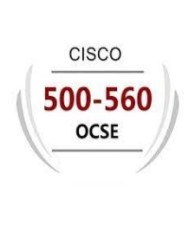Note: Our vulnerability security researcher Yotam Perkal authored this blog.The recent turbulence surrounding MITRE’s Common Vulnerabilities and Exposures (CVE) program, a cornerstone of vulnerability management, has sent shockwaves through the cybersecurity community. While an eleventh-hour funding extension from the United States Cybersecurity and Infrastructure Security Agency (CISA) has temporarily averted disruption, the situation has underscored the fragility of our collective reliance on a single vulnerability tracking system. At Zscaler, we view this situation as a moment to double down on resilience, innovation, and adaptability. Our focus remains clear: enabling customers to detect, prioritize, and address vulnerabilities with or without reliance on a centralized CVE system.The Backbone of Vulnerability Management: What is the CVE Program?The CVE program, operated by MITRE and funded by the Department of Homeland Security (DHS), has been a foundational pillar of the cybersecurity ecosystem for more than two decades. By providing standardized, unique identifiers for publicly disclosed software vulnerabilities, CVEs ensure consistency across threat alerts, vulnerability scanners, penetration testing tools, patch management systems, and threat intelligence platforms. Simply put, the CVE system provides a common language for identifying, cataloging, and coordinating responses to cybersecurity risks.Recent Events: Crisis Averted, But Questions RemainOn April 15, 2025, MITRE announced that funding for the CVE program, along with related systems like the Common Weakness Enumeration (CWE), was at risk and warned of potential future disruptions to the program. Given the pivotal role CVEs play in vulnerability detection, remediation, and threat intelligence workflows, the announcement sent ripples of concern across the cybersecurity community.On April 16, 2025, just hours before the funding cut was to take effect, the United States Cybersecurity and Infrastructure Security Agency (CISA) confirmed an 11-month funding extension for the CVE program. While this temporary lifeline has reassured stakeholders in the short term, uncertainties remain about the program’s long-term sustainability.For security leaders and practitioners, the crisis served as an unwelcome reminder of how centralized dependencies can create systemic risks, as even a brief disruption in CVE operations could lead to significant challenges in identifying vulnerabilities, coordinating patches, and deploying mitigations.The fragility exposed by this ordeal raises a pivotal question: What happens if the CVE system falters again?A disruption in the CVE program risks:- Delayed disclosures: Vulnerability disclosures could be delayed, leaving organizations exposed to threats for longer periods.- Fragmented coordination: Without a centralized standard, researchers, vendors, and responders may struggle to coordinate effectively.- Automation challenges: Vulnerability scanners, patch management workflows, and other automated systems that rely on CVE identifiers would face significant disruptions.The cybersecurity industry cannot afford a single point of failure in its vulnerability management ecosystem. This moment calls for a shift toward resilient, multi-faceted approaches that lessen dependency on centralized registries and introduce alternative methods of threat detection, prioritization, and response. The Road Ahead: Building a Resilient Vulnerability Management EcosystemThe uncertainty surrounding the CVE program should act as a wake-up call for the entire cybersecurity industry. While the CVE system remains a vital public resource, modern vulnerability management requires a broader, more agile approach to mitigate emerging risks.At Zscaler, we see this crisis as an opportunity to redefine how vulnerabilities are detected, contextualized, and remediated. Here’s how we are preparing for the future:Diversified Threat IntelligenceThe Zscaler platform integrates multiple sources of global threat intelligence, as well as detections from our internal ThreatLabZ research team, allowing customers to pinpoint vulnerabilities and emerging risks even in the absence of a CVE identifier.The Zscaler Data Fabric for Security and broader risk contextOur Data Fabric for Security already integrates security findings and context spanning identity, assets, user behavior, mitigating controls, business processes, organizational hierarchy, and more. We are constantly adding additional sources of vulnerability information and are not dependent on a single database for vulnerability intelligence. By contextualizing signals from a variety of feeds, we ensure that security teams stay informed and actionable.AI-Driven Detection and Prioritization:Leveraging machine learning and behavioral analytics, Zscaler detects vulnerabilities and anomalous activity based on behavior rather than relying exclusively on formal identifiers. This approach accelerates response times and reduces the dependency on single points of failure like the CVE system.In addition, we are also closely monitoring alternative databases and emerging initiatives that could help cope with a future potential disruption to the CVE program. For example:OWASP’s Unified Framework for Global Vulnerability Intelligence: OWASP has put forward an ambitious, decentralized model to address current gaps in vulnerability tracking systems. The proposed framework aims to enable transparent, scalable, and open sharing of cybersecurity data in a resilient federated structure.This framework aims to encourage diverse participation, including underrepresented sectors like medical device manufacturers and critical infrastructure industries, and seeks to capture a broader range of cybersecurity issues. While this initiative is in its early stages, it will hopefully lead to a more decentralized, community driven model for vulnerability identification and tracking. European Vulnerability Database (EUVD): Curated by the European Union Agency for Cybersecurity (ENISA), the EUVD represents a regional effort to complement and sometimes extend the functionality of the CVE system. ENISA coordinates closely with MITRE and the CVE ecosystem while offering its own vulnerability registry services as a CVE Numbering Authority (CNA). Specifically, EUVD focuses on vulnerabilities discovered by or reported to European Computer Security Incident Response Teams (CSIRTs), supporting coordinated disclosure processes to mitigate risks within the EU community. GCVE.EU: The Global CVE Allocation System (GCVE) is another promising effort to decentralize how vulnerability identification and numbering are handled. Unlike the centralized block distribution system used by traditional CVE processes, GCVE introduces GCVE Numbering Authorities (GNAs), independent entities empowered to allocate identifiers autonomously while maintaining compatibility with the existing CVE ecosystem. This approach aims to improve flexibility and scalability while granting more autonomy to participating organizations. The emphasis on decentralization aligns with the growing recognition that a single point of failure in vulnerability tracking can disrupt global coordination. CVE Foundation: A coalition of longtime, active CVE Board members has been working to transition CVE into a dedicated, non-profit foundation. This plan envisions a more focused organization exclusively devoted to maintaining the quality, integrity, and global availability of CVE data. The CVE Foundation aims to continue the mission of delivering accurate, reliable vulnerability identifiers while ensuring the public resource remains accessible to security practitioners worldwide.Zscaler’s Vision for a More Resilient FutureThe recent funding crisis surrounding the CVE program underscores a fundamental truth: cybersecurity resilience hinges on distributed, adaptive systems that are not bound to a single point of failure. At Zscaler, we have always taken this approach.By embracing agility, integrating multiple intelligence sources, and focusing on zero trust principles, we empower customers to stay ahead of vulnerabilities, no matter what changes within the threat landscape. While we remain hopeful for the continued stability of the CVE program, our mission is clear: to protect our customers from known and unknown risks, enabling them to operate confidently in a rapidly evolving digital world.The events of the past few days serve as both a warning and an opportunity to build a more adaptable and collaborative cybersecurity ecosystem. Rest assured, Zscaler will remain at the forefront of this evolution, ensuring that security teams have the tools they need to succeed, no matter what challenges lie ahead.
[#item_full_content] Note: Our vulnerability security researcher Yotam Perkal authored this blog.The recent turbulence surrounding MITRE’s Common Vulnerabilities and Exposures (CVE) program, a cornerstone of vulnerability management, has sent shockwaves through the cybersecurity community. While an eleventh-hour funding extension from the United States Cybersecurity and Infrastructure Security Agency (CISA) has temporarily averted disruption, the situation has underscored the fragility of our collective reliance on a single vulnerability tracking system. At Zscaler, we view this situation as a moment to double down on resilience, innovation, and adaptability. Our focus remains clear: enabling customers to detect, prioritize, and address vulnerabilities with or without reliance on a centralized CVE system.The Backbone of Vulnerability Management: What is the CVE Program?The CVE program, operated by MITRE and funded by the Department of Homeland Security (DHS), has been a foundational pillar of the cybersecurity ecosystem for more than two decades. By providing standardized, unique identifiers for publicly disclosed software vulnerabilities, CVEs ensure consistency across threat alerts, vulnerability scanners, penetration testing tools, patch management systems, and threat intelligence platforms. Simply put, the CVE system provides a common language for identifying, cataloging, and coordinating responses to cybersecurity risks.Recent Events: Crisis Averted, But Questions RemainOn April 15, 2025, MITRE announced that funding for the CVE program, along with related systems like the Common Weakness Enumeration (CWE), was at risk and warned of potential future disruptions to the program. Given the pivotal role CVEs play in vulnerability detection, remediation, and threat intelligence workflows, the announcement sent ripples of concern across the cybersecurity community.On April 16, 2025, just hours before the funding cut was to take effect, the United States Cybersecurity and Infrastructure Security Agency (CISA) confirmed an 11-month funding extension for the CVE program. While this temporary lifeline has reassured stakeholders in the short term, uncertainties remain about the program’s long-term sustainability.For security leaders and practitioners, the crisis served as an unwelcome reminder of how centralized dependencies can create systemic risks, as even a brief disruption in CVE operations could lead to significant challenges in identifying vulnerabilities, coordinating patches, and deploying mitigations.The fragility exposed by this ordeal raises a pivotal question: What happens if the CVE system falters again?A disruption in the CVE program risks:- Delayed disclosures: Vulnerability disclosures could be delayed, leaving organizations exposed to threats for longer periods.- Fragmented coordination: Without a centralized standard, researchers, vendors, and responders may struggle to coordinate effectively.- Automation challenges: Vulnerability scanners, patch management workflows, and other automated systems that rely on CVE identifiers would face significant disruptions.The cybersecurity industry cannot afford a single point of failure in its vulnerability management ecosystem. This moment calls for a shift toward resilient, multi-faceted approaches that lessen dependency on centralized registries and introduce alternative methods of threat detection, prioritization, and response. The Road Ahead: Building a Resilient Vulnerability Management EcosystemThe uncertainty surrounding the CVE program should act as a wake-up call for the entire cybersecurity industry. While the CVE system remains a vital public resource, modern vulnerability management requires a broader, more agile approach to mitigate emerging risks.At Zscaler, we see this crisis as an opportunity to redefine how vulnerabilities are detected, contextualized, and remediated. Here’s how we are preparing for the future:Diversified Threat IntelligenceThe Zscaler platform integrates multiple sources of global threat intelligence, as well as detections from our internal ThreatLabZ research team, allowing customers to pinpoint vulnerabilities and emerging risks even in the absence of a CVE identifier.The Zscaler Data Fabric for Security and broader risk contextOur Data Fabric for Security already integrates security findings and context spanning identity, assets, user behavior, mitigating controls, business processes, organizational hierarchy, and more. We are constantly adding additional sources of vulnerability information and are not dependent on a single database for vulnerability intelligence. By contextualizing signals from a variety of feeds, we ensure that security teams stay informed and actionable.AI-Driven Detection and Prioritization:Leveraging machine learning and behavioral analytics, Zscaler detects vulnerabilities and anomalous activity based on behavior rather than relying exclusively on formal identifiers. This approach accelerates response times and reduces the dependency on single points of failure like the CVE system.In addition, we are also closely monitoring alternative databases and emerging initiatives that could help cope with a future potential disruption to the CVE program. For example:OWASP’s Unified Framework for Global Vulnerability Intelligence: OWASP has put forward an ambitious, decentralized model to address current gaps in vulnerability tracking systems. The proposed framework aims to enable transparent, scalable, and open sharing of cybersecurity data in a resilient federated structure.This framework aims to encourage diverse participation, including underrepresented sectors like medical device manufacturers and critical infrastructure industries, and seeks to capture a broader range of cybersecurity issues. While this initiative is in its early stages, it will hopefully lead to a more decentralized, community driven model for vulnerability identification and tracking. European Vulnerability Database (EUVD): Curated by the European Union Agency for Cybersecurity (ENISA), the EUVD represents a regional effort to complement and sometimes extend the functionality of the CVE system. ENISA coordinates closely with MITRE and the CVE ecosystem while offering its own vulnerability registry services as a CVE Numbering Authority (CNA). Specifically, EUVD focuses on vulnerabilities discovered by or reported to European Computer Security Incident Response Teams (CSIRTs), supporting coordinated disclosure processes to mitigate risks within the EU community. GCVE.EU: The Global CVE Allocation System (GCVE) is another promising effort to decentralize how vulnerability identification and numbering are handled. Unlike the centralized block distribution system used by traditional CVE processes, GCVE introduces GCVE Numbering Authorities (GNAs), independent entities empowered to allocate identifiers autonomously while maintaining compatibility with the existing CVE ecosystem. This approach aims to improve flexibility and scalability while granting more autonomy to participating organizations. The emphasis on decentralization aligns with the growing recognition that a single point of failure in vulnerability tracking can disrupt global coordination. CVE Foundation: A coalition of longtime, active CVE Board members has been working to transition CVE into a dedicated, non-profit foundation. This plan envisions a more focused organization exclusively devoted to maintaining the quality, integrity, and global availability of CVE data. The CVE Foundation aims to continue the mission of delivering accurate, reliable vulnerability identifiers while ensuring the public resource remains accessible to security practitioners worldwide.Zscaler’s Vision for a More Resilient FutureThe recent funding crisis surrounding the CVE program underscores a fundamental truth: cybersecurity resilience hinges on distributed, adaptive systems that are not bound to a single point of failure. At Zscaler, we have always taken this approach.By embracing agility, integrating multiple intelligence sources, and focusing on zero trust principles, we empower customers to stay ahead of vulnerabilities, no matter what changes within the threat landscape. While we remain hopeful for the continued stability of the CVE program, our mission is clear: to protect our customers from known and unknown risks, enabling them to operate confidently in a rapidly evolving digital world.The events of the past few days serve as both a warning and an opportunity to build a more adaptable and collaborative cybersecurity ecosystem. Rest assured, Zscaler will remain at the forefront of this evolution, ensuring that security teams have the tools they need to succeed, no matter what challenges lie ahead.










